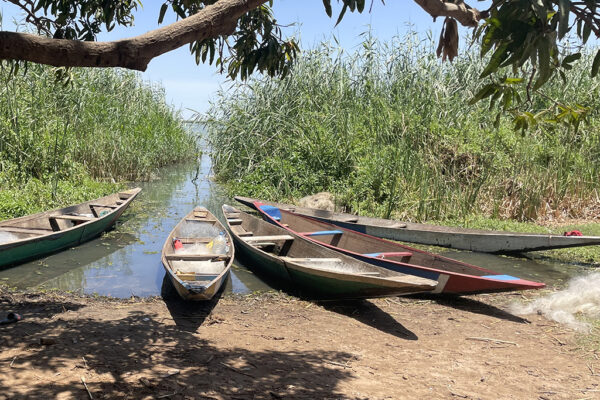New Public Health Innovation Can Also Break a Poverty Trap

Water access point in Senegal (Photo courtesy of PhD candidate Molly Doruska)
When residents of rural Senegal collect water for cooking and other everyday activities, they risk contracting an infectious disease known as schistosomiasis. Infecting roughly 120 million people globally, the disease causes fever, abdominal pain, and muscle aches. It can persist for years if untreated, and it jeopardizes people’s ability to provide for their families. Economic productivity in affected communities suffers.
New research offers these communities a “profitable, win-win approach to addressing food and water access, poverty alleviation, infectious disease control, and environmental sustainability.” Molly Doruska, a PhD candidate in the Charles H. Dyson School of Applied Economics and Management at the Cornell SC Johnson College of Business, and her advisor, Christopher B. Barrett, Stephen B. and Janice G. Ashley Professor of Applied Economics and Management, contributed to the work, which was published online in Nature on July 12.
To increase their income, Barrett explained, farmers boost agricultural yield by using chemical fertilizers. But some fertilizer inadvertently enters waterways and feeds aquatic plants and algae. Snails thrive in that environment—and those snails host the parasitic worm that causes schistosomiasis. Disease spreads and limits residents’ ability to make a living.
“This is an example of a poverty trap that originates in closely coupled human and natural systems,” said Barrett. “In this system, human land and chemical use impacts aquatic ecology, which feeds back to impact human health and economic productivity, which then influences human behavior and living standards, restarting the cycle.”
Led by Jason Rohr, a parasitologist at the University of Notre Dame, the research team removed more than 400 metric tons of plants at water access points in Senegal. Snail populations declined—and infection rates dropped by nearly one-third.
Importantly, the removed vegetation was not simply left to rot. Instead, researchers worked with local farmers to recapture the nutrients in the vegetation. They dried and fed some of it to livestock, where it proved a much lower-cost substitute for purchased feed, and they composted some and applied it to crops, which increased yields as much as or more than chemical fertilizers.
Doruska and Barrett showed that the benefits of removing the weeds and using them in agriculture were roughly nine times greater than the costs.
Addressing disease, food security, water access, and poverty with a unified approach is unusual, according to the researchers, who noted that governments, organizations, and researchers often approach these issues individually rather than as part of a connected system.
These findings were “a pleasant confirmation of intuitive results that had not been established previously,” Barrett said. “Crop and livestock agriculture represents the main livelihood in these villages. The poverty of these communities stems directly from the limited productivity of local agriculture and of workers. Reducing illness and boosting agricultural productivity can contribute directly to improving living standards.”
